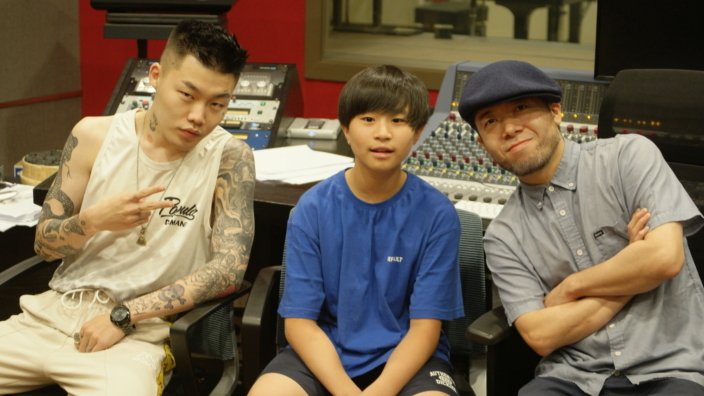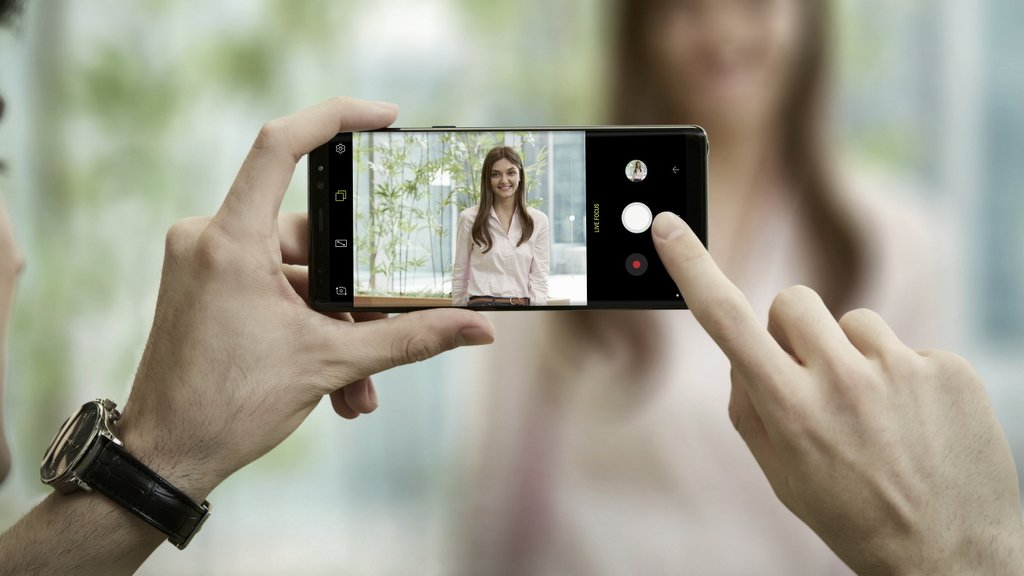Smartphone sound design is a funny thing. For most of us, we hear the sounds of our phone’s notifications, alarms and ringtones every day, but rarely do we really actively listen to the noises and melodies they're comprised of. One person who does – and spends a lot of time thinking about them besides – is Samsung Mobile’s Senior Sound Designer, Myoung Woo Nam. On a recent trip to South Korea, we got the chance to speak with Nam to get an understanding of just how much work goes into finding the perfect tone or melody for different devices functions – and straddling the fine line between being informative, but not so attention-demanding that a sound becomes annoying.
Myoung Woo Nam kicked off an explanation of his department’s role with a scene from 2013 space-thriller Gravity, where the film’s protagonist gets stranded on a Russian segment of the International Space Station and has to try to navigate using the foreign labels on the flight system’s controls. Eventually, she manages to narrow down the command she was looking for by using a series of feedback beeps and alarm noises.
Nam said that they have very much the same design ethos for smartphones, with every interface noise intended to give feedback or provide some 'universal' audio alert that (hopefully) transcends the various languages the phone's available in. Nam explained, “This is a good example of how the Audio User Interface is important. Once the person hears the sound they should be able to understand what it means, regardless of what language they use. Like music. Everyone can understand.”
Samsung's sound engineering team is responsible for creating the Audio User Interfaces for all of the technology company's devices – not just smartphones. That includes everything from air conditioners to smartwatches and, says Nam, each category throws up its own novel challenges and opportunities. For example, according to Nam, “Samsung’s air conditioner takes time to start. About 10 seconds.
“And during this time, we want to give an appropriate message to the user that it’s going to be very cold soon, but it will take a little while, so please be patient.”
When talking with Nam, it’s clear just how much thought goes into creating the sounds on the company's various devices. The sound team challenge themselves to create on and off sounds that you can understand without knowing which action was taken. “A higher-pitched tone is temperature up, the low-pitched tone means a lower temperature, but we also wanted to give the exact meaning for the power on and the power off,” Nam continued. “You should be able to guess which is which. That’s a human instinct, it’s a musical language that’s embedded in the sound design.”
For a refrigerator like Samsung’s Family Hub it’s handy to have an alert for when you accidentally leave the door open, but Nam stresses just how difficult it is to find something that will notify you without being annoying or unnecessarily loud.
Taking a different tack altogether with the sound design of Samsung’s Gear S smartwatch, Nam talks about how it is important for the sound engineering team to come up with a unifying theme for the product they’re looking at. “One of the concepts of the Gear series was the tick-tock of time,” said Nam. “The tick is at 60bpm so we double it to 120bpm. Every sound [on the Gear S watch] is at 120bpm, that’s the moderato.”
The Sound of the Galaxy
While there are plenty of sounds to be created across the wide range of devices that Samsung sell, nothing keeps the sound team quite as busy as the company’s Galaxy Smartphones. Nam said there’s over 100 unique noises, melodies and pieces of music that need to be generated, in addition to keeping up the longstanding tradition of creating a unique version of Samsung Mobile’s audio branding tune Over the Horizon, each year. If you’ve ever heard the cacophony of notification noises that ring out when a plane lands these days, there’s a good chance you’re familiar with the Over the Horizon tune. Samsung has made a point of updating this melody each year, to keep the audio signature front of mind, without it becoming repetitive. “Over the Horizon has changed each year since 2011.” Explained Nam, “The first version was a rock version that was supposed to represent ‘beyond the smart experience’ and the second one in the Galaxy S3 was ‘Designed for Humans’, so we made it a softer tune that’s a little bit New Wavey, but you still have the same melody.”
Fast forward to 2015, when the sound design team partnered up with the Nashville String Machine and renowned audio engineer Al Schmitt to mix a version of the melody around the theme of ‘Fresh Impression’. This transformed into a jazz-fusion rendition by the Dirty Loops for 2016’s ‘Consideration’ iteration and was updated again this year for the Galaxy S8. The 6th Over the Horizon iteration, ‘Millennials’, came to fruition through an original composition from the young English Musical prodigy Jacob Collier. “We had to find the most Millennial artist possible, someone who is expected to become very famous,” said Nam. “After we worked with him, he received Grammy Awards, so we were right.” Taking a little pride in uncovering this talent early, Nam added, “If we are trying to work [with Collier] right now we might have to pay twice or triple what we did at the time.”
Samsung's new beats for the Note 8

From left: Beatboxer - 2 Tak, Pen Beat Musician - Jinyoung Choi and Producer - Tadashi Takatsuka.
The distinguishing factor of Samsung’s Galaxy Note series is the additional stylus, and Nam said the sound team really wanted to do something to highlight this unique feature on the popular phablet. Attempting to marry the S Pen and ‘Millennial’ themes, the sound team stumbled across a YouTube-based music scene, where pens tapping on objects forms the driving beat of the rhythms. 'Pen beat', as the genre is called, has a reasonable following in South Korea and the sound team managed to find a local pen-beat artist to work with. “One particular young musician from the pen beat videos caught our eye and we contacted him and brought him in to record the ringtones alongside a well-known beatboxer.” Said Nam, “We gathered the pen beat and the beatboxer together to make something interesting for the sound of the Galaxy Note 8.”
The team also sourced a local producer that was well-versed in mixing beatboxing to oversee the creation of three new ringtones and a series of notification and alert noises for the flagship phablet. The collaboration resulted in a couple of these songs being recorded in full and made available for free to Note 8 owners in a high-resolution DSD-audio-format.
If you aren’t lucky enough to have upgraded to the Note 8 yet, however, you can still check out the new beats on Samsung's newsroom page.
Joel Burgess flew to South Korea courtesy of Samsung Australia.







-470-75.JPG)




